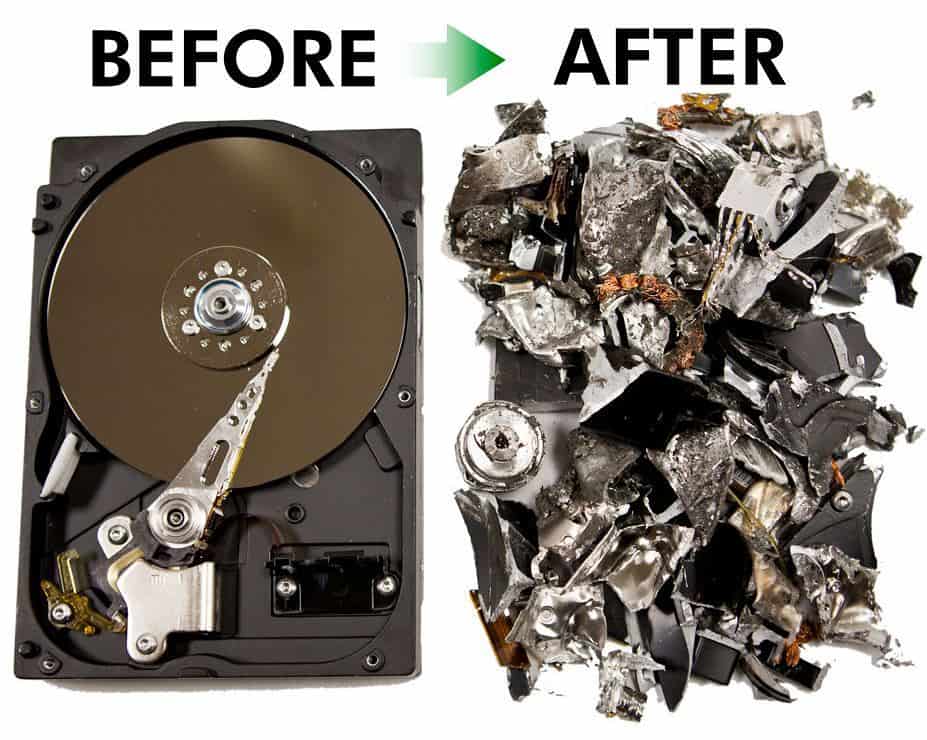The Value of Effective Data Damage Practices in Shielding Sensitive Information and Ensuring Computer Safety
In a period where information violations are significantly common, the value of reliable information destruction methods can not be overstated. Organizations face substantial threats when sensitive details is inadequately thrown away, possibly resulting in unapproved accessibility and serious financial repercussions. Implementing robust data devastation techniques not only mitigates these dangers however additionally lines up with lawful compliance demands, ensuring that organizations maintain their reputation and foster client count on. The concern remains: what details approaches can be used to enhance these practices, and just how can companies efficiently incorporate them into their total cybersecurity framework?
Comprehending Data Devastation
Recognizing data devastation is important in today's electronic landscape, where delicate details can easily be compromised. Reliable information devastation involves not simply making certain but removing documents that information is irretrievable via extensive techniques. This process is important for companies that take care of confidential client information, intellectual residential property, or interior files, as any kind of violation can bring about extreme economic and reputational consequences.
Data destruction includes numerous methods, consisting of shredding physical media, degaussing magnetic storage space gadgets, and employing software-based options that overwrite information numerous times. Each method offers a specific function and should line up with the sensitivity of the information being taken care of. For instance, physical damage is typically chosen for disk drives consisting of very confidential information, while software application methods could be enough for much less sensitive details.
Moreover, adhering to industry standards and regulations, such as the General Data Security Regulation (GDPR) or the Medical Insurance Transportability and Responsibility Act (HIPAA), is necessary for compliance and to minimize lawful threats. Organizations should create a durable information devastation policy, train staff members on finest practices, and on a regular basis examine their procedures to ensure that all delicate information is disposed of firmly and successfully.
Risks of Inadequate Practices
Poor data destruction techniques subject companies to significant dangers that can have far-reaching consequences. When sensitive information is not effectively thrown away, it stays prone to unapproved gain access to, which can bring about information violations and identification burglary. Such events not just jeopardize the safety and security of individuals yet additionally tarnish the organization's credibility, causing a loss of consumer trust fund and possible monetary consequences.
Additionally, regulatory conformity is increasingly strict in several markets. Failure to comply with data damage laws can result in significant penalties and legal activities against organizations. These fines can draw away and stress monetary sources attention from core service operations.
Furthermore, the abuse of residual information can cause copyright burglary or corporate espionage, jeopardizing affordable advantages (data destruction). The influence of poor data devastation prolongs past prompt economic losses; it can additionally lead to long-lasting damage to brand honesty and market position

Organizations must acknowledge that information safety and security is not exclusively concerning stopping breaches; it also includes the accountable management of information throughout its lifecycle. Ignoring reliable data devastation methods can have disastrous ramifications, emphasizing the requirement for robust procedures to minimize these threats.
Best Practices for Information Devastation
Executing reliable information damage methods is necessary for safeguarding delicate details and keeping conformity with governing requirements. Organizations needs to embrace a multi-faceted strategy to make sure that information is irretrievable, therefore stopping unapproved gain access to and potential breaches.
First, data should be categorized based on sensitivity, permitting companies to apply appropriate devastation methods customized to the level of danger. For electronic data, making use of software-based data-wiping tools that abide by industry requirements can efficiently overwrite existing information. Physical damage techniques, such as shredding or degaussing, are essential for devices that store sensitive information, ensuring complete obliteration.
Developing a clear information retention plan is vital, detailing how much time various sorts of information should be preserved prior to devastation. Regular audits of information storage systems are likewise needed to identify unnecessary or obsolete data requiring elimination.
Furthermore, training staff members on more the importance of information damage and the details protocols to adhere to fosters a culture of safety and security within the company. Lastly, keeping documentation of information destruction processes offers responsibility and supports conformity with internal policies and exterior laws. By adhering to these finest practices, organizations can considerably alleviate the threats related to data direct exposure.
Legal and Compliance Factors To Consider

Failure to adhere to these laws can cause extreme penalties, including significant fines and reputational damages. Organizations has to implement a durable information damage policy that lines up with these lawful structures and offers clear guidelines on the appropriate methods of data disposal, whether physical shredding or electronic wiping.
Additionally, maintaining documentation of information destruction activities is crucial for showing conformity during audits or inspections. By prioritizing lawful and compliance considerations, organizations can enhance their information protection posture and foster trust with stakeholders and customers, eventually adding to an extra protected data monitoring atmosphere.
Advantages of Effective Information Destruction
Reliable information devastation techniques prolong beyond simple compliance; they offer significant benefits to companies that prioritize them. By making sure that here delicate info is irretrievably ruined, companies mitigate the risk of information violations and the prospective financial effects related to them. This aggressive method not just safeguards versus unauthorized access however likewise boosts the general reliability of the company in the eyes of customers and stakeholders.
Applying robust information destruction techniques, such as physical devastation of storage space tools or innovative information cleaning methods, contributes to the conditioning of an organization's cybersecurity pose. data destruction. It minimizes the chance of copyright burglary and secures proprietary info, thus keeping an one-upmanship out there

Final Thought
In final thought, efficient data destruction techniques are crucial anchor for securing delicate info and improving total computer safety. Inevitably, a commitment to durable data devastation methods fosters a culture of obligation, therefore reinforcing a company's cybersecurity position and keeping customer trust.
